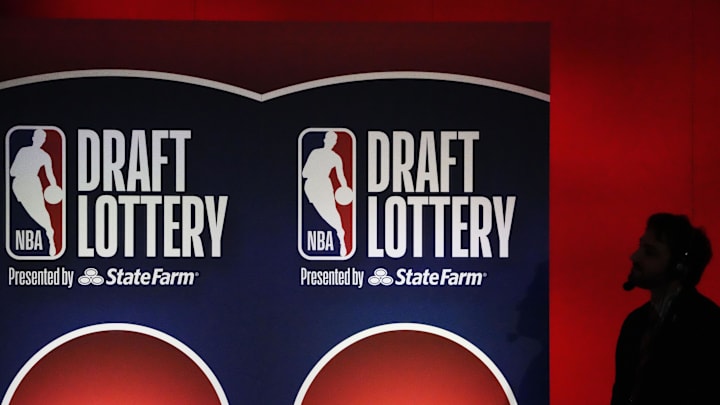The New Orleans Pelicans are in possession of what has all of the makings of being the swing pick at the 2025 NBA Draft. At No. 7 overall, New Orleans is operating with the selection that often determines how the rest of the board takes shape.
As such, Joe Dumars has received a golden opportunity to utilize his leverage to make a significant impact to further his team along a winning timeline—all because New Orleans landed at No. 7 rather than No. 6.
The top five selections at any NBA Draft typically consist of players whom most agree are top-tier prospects. The general consensus in the early stages of the 2025 evaluation process appears to imply that at least four of those players are safe bets: Cooper Flagg, Dylan Harper, Ace Bailey, and V.J. Edgecombe.
Competition is mounting for the final spot in the average analyst's top five, with the likes of Jeremiah Fears, Tre Johnson, and Kon Knueppel commonly appearing in that range.
The Washington Wizards will have the first opportunity to land a player who unexpectedly slides outside of the top five, as so often occurs once general managers reveal how different their boards are from the analysts'. In that scenario, Washington would have a chance to either trade back with a team that wants a player who was in their top-five prospects or utilize the selection for themselves.
It's at No. 7, however, that the Pelicans would have the greater odds of success—whether on the trading or drafting fronts.
No. 6 and No. 7 picks carry different types of pressure, trading costs
Trading into the top five is often a costly endeavor, as players selected within the first five picks are often labeled as having All-Star potential. Whether fair or foul, it's a common distinction made in NBA Draft circles.
Look no further than the top five picks in the 2021 NBA Draft: Cade Cunningham, Jalen Green, Evan Mobley, Scottie Barnes, and Jalen Suggs. All five were extended before they could even touch restricted free agency later this summer.
It's rare that all five picks pan out in the way they have for those respective franchises, but that's the hope of every team with a selection that early—and thus, the hefty price of trading into the top five.
The No. 6 pick is often more complicated, with teams typically hoping to land a projected top-five pick who simply fell one spot because of another team's preference. No. 7 admittedly isn't entirely different, but the approach typically favors a strategy that's less focused on fringe top-five status and more on a balance of immediate value and untapped potential.
If there's a team that has interest in trading into the top five but fails, and their top prospect slides to No. 7, that makes New Orleans the perfect candidate to trade for more valuable assets.
History of No. 7 suggests it's actually the better pick
The last four players selected at No. 7 overall were Donovan Clingan, Bilal Coulibaly, Shaedon Sharpe, and Jonathan Kuminga. That's a captivating list of players when one considers the fact that they've all managed to emerge as productive contributors during the length of their respective rookie-scale contracts.
Previous draft classes can't confirm anything about 2025, but if New Orleans decides to hold on to the No. 7 pick, history is on its side.
Trace the steps back even further and the list becomes even more impressive. Killian Hayes has unfortunately struggled to find his footing, but the previous four No. 7 picks before him were Coby White, Wendell Carter Jr., Lauri Markkanen, and Jamal Murray.
Considering each of those players was selected within the past 10 years, and Hayes is the only player who has effectively been written off at this stage, the No. 7 pick is undeniably intriguing.
It's unclear who the next in line will be, but there's something to be said about the difference between the No. 6 and No. 7 selections. The proof is in the talent pool, as the past 10 players selected at No. 6 were Tidjane Salaün, Anthony Black, Bennedict Mathurin, Josh Giddey, Onyeka Okongwu, Mo Bamba, Jonathan Isaac, Buddy Hield, and Willie Cauley-Stein.
By no means is that a list of subpar individuals, but the gap between that group and those selected at No. 7 speaks to the luxury of avoiding the pitfalls of picking one spot after the top five.
The freedom of picking at No. 7
It may be impossible to definitively pinpoint the difference between the No. 6 and No. 7 selections. There's something to be said, however, for not being in a position in which there's pressure to take a player who was projected as a top-five prospect but fell out of the first five spots.
At No. 7, the luxury of seeing the No. 6 team pass on a player who may not have been as much of a fit for a top-five pick than anticipated lifts the pressure and permits a more versatile approach to drafting.
New Orleans should benefit from that opportunity as they look to add a meaningful rookie or move the pick. Either outcome would position Dumars to kickstart his tenure with an addition that would go a long way toward outlining his vision.
Losing a top-four pick at the lottery remains difficult to stomach, but perhaps the paranoia involved in benefiting from avoiding the No. 6 pick is more appropriate than it seems.
New Orleans can now go into the 2025 NBA Draft without pressure to select a player who, "Should've been a top five pick," as the narrative might suggest. It can evaluate the landscape of options, create its own big board, and benefit from any of those players falling into their lap—all the while avoiding the expectation of selecting them.
There shouldn't be much of a difference between No. 6 and No. 7, but the past 10 years prove there is—and New Orleans should have suitors and intriguing prospects accordingly.
